
As the holidays approach and we begin to decorate our homes, stringing lights and hanging wreaths, I have to wonder what our pets think of all this.
I’ve always imagined our dog sitting back, looking at the Christmas tree and thinking, “Seriously? I’m not allowed to bring in one stick from the yard, but mom can bring in an entire tree?”
Yes, puppernoodle, as the keeper of the treat jar, yes, I can.
A surprising number of plants go hand in hand with celebrating and decorating for the holidays. And if you have a cat or dog, the first thing you probably wonder when you hang that mistletoe or put that poinsettia on the mantel is, “Is this poisonous?”
The holidays are stressful enough without a sick pet. We’ve put together this handy list of traditional holiday plants and whether or not they are toxic to cats or dogs.
We’ll also take a look at the effects the toxic ones have on pets if ingested. While most plants that can cause issues on this list are mildly toxic, it’s best to be prepared. With any plant, effects on your pet have a lot to do with your pet’s size and how much they have eaten.
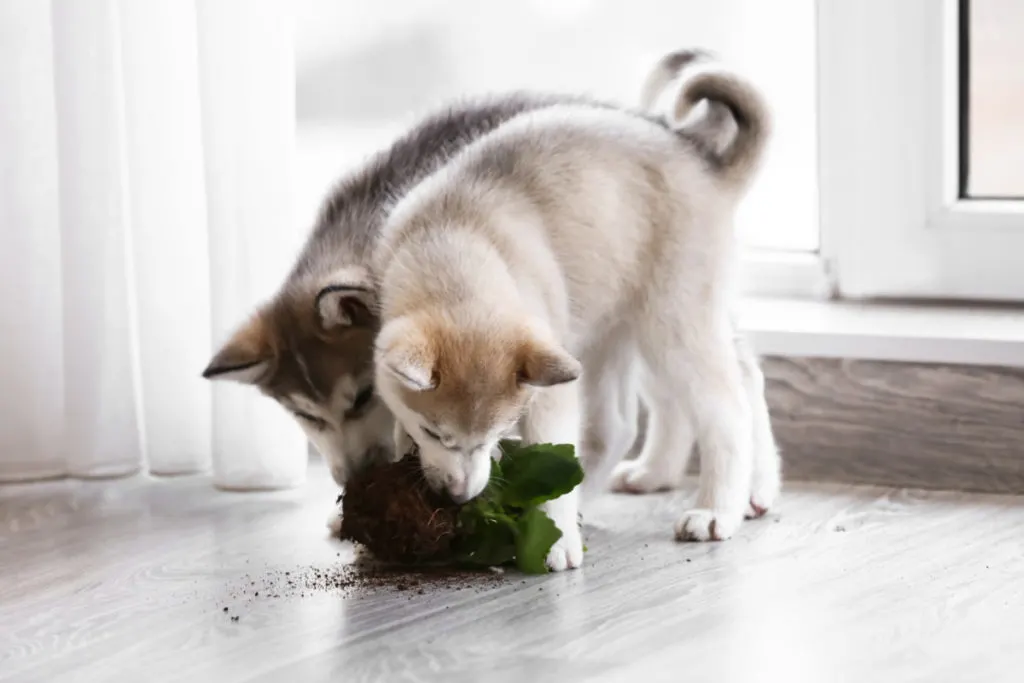
You may call your vet and find yourself with the reassurance that your pet will be fine, but you’ll be in for a long night of paper towels and carpet cleaner.
Naturally, you know your pet better than anyone else.
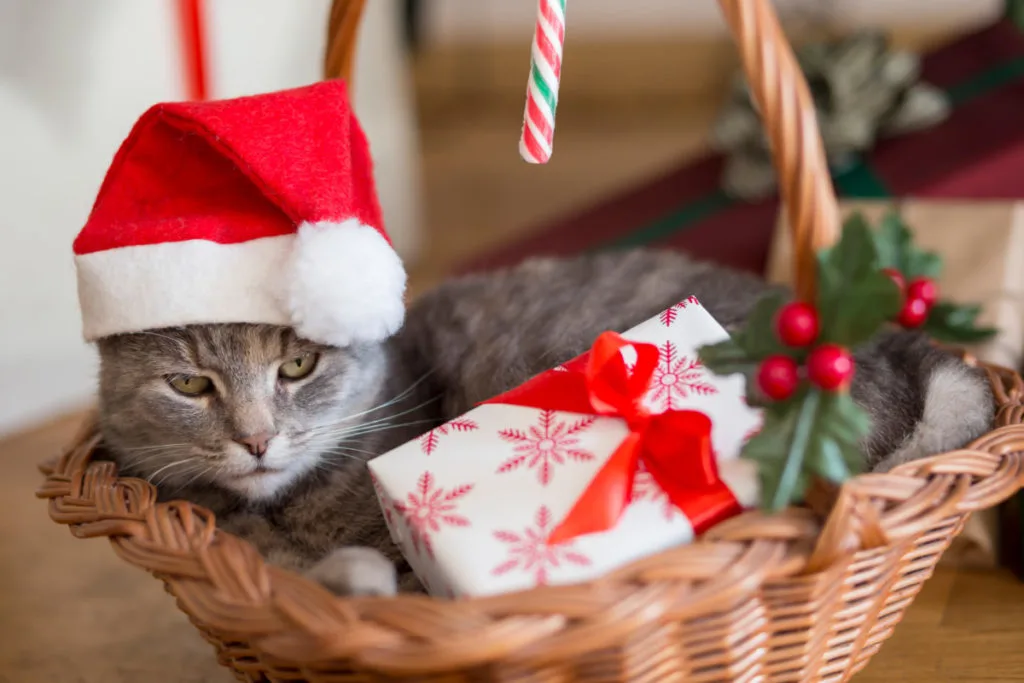
Whether you’re the pet parent with the vet’s office on speed dial because of the cat who gets into any and every plant you bring in the house. Or your fur baby is the dog who couldn’t be bothered to lift his head from his bed when burglars are stealing the fine silver, let alone bother any of the greenery in your home – use your best judgment when choosing live plants to decorate.
That being said, you should always call your emergency vet if you think your pet is in danger or shows signs of illness. It’s especially important if you suspect they may have eaten something they shouldn’t have.
We’ve provided this information for educational purposes when choosing holiday plants for your home. This information is not to be used as veterinary advice or to diagnose a pet.
If you live in the US, you can always call the ASPCA Animal Poison Control Center Phone Number at (888) 426-4435. (They may charge a small consultation fee.)
1. Amaryllis
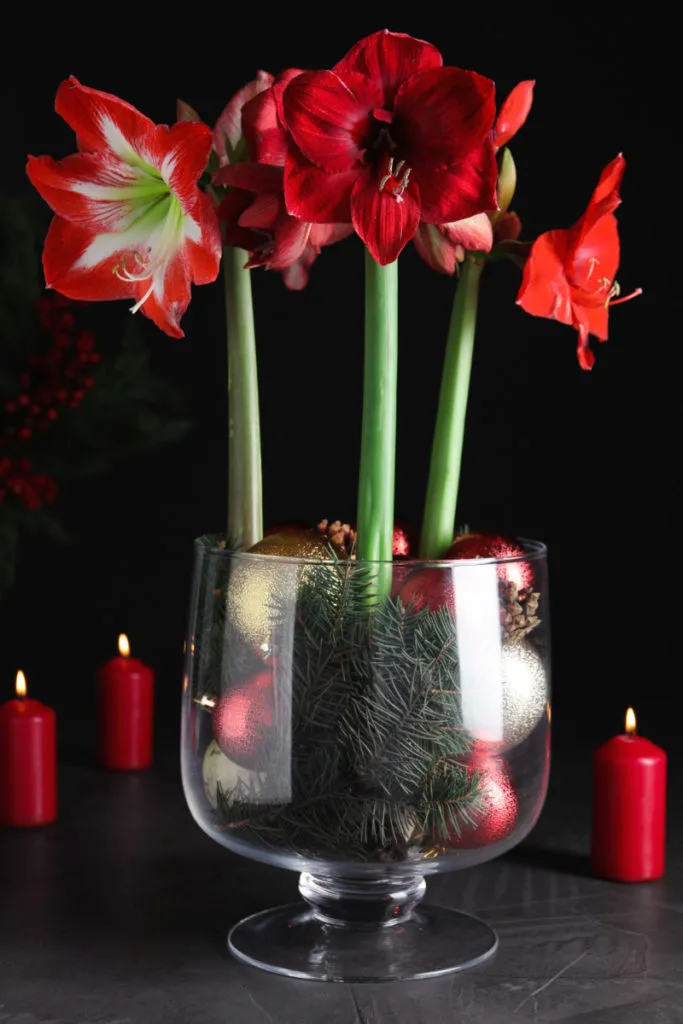
These showy blooms pop up in many houses each Christmas to brighten an otherwise drab time of year. Watching the long green stems develop a bud that reveals a massive red flower is a tradition for many of us.
While they are part of the lily family, they aren’t true lilies, so they aren’t nearly as toxic. However, amaryllis is still toxic to cats and dogs, as they contain alkaloids that can make your pet sick.
Ingesting any part of the bulb, stem, leaves, or flower can cause illness in your pet ranging from vomiting, trouble breathing and low blood pressure.
Related Reading: How to Save Your Amaryllis Bulb To Bloom Again Next Year
2. Paperwhites or Narcissus
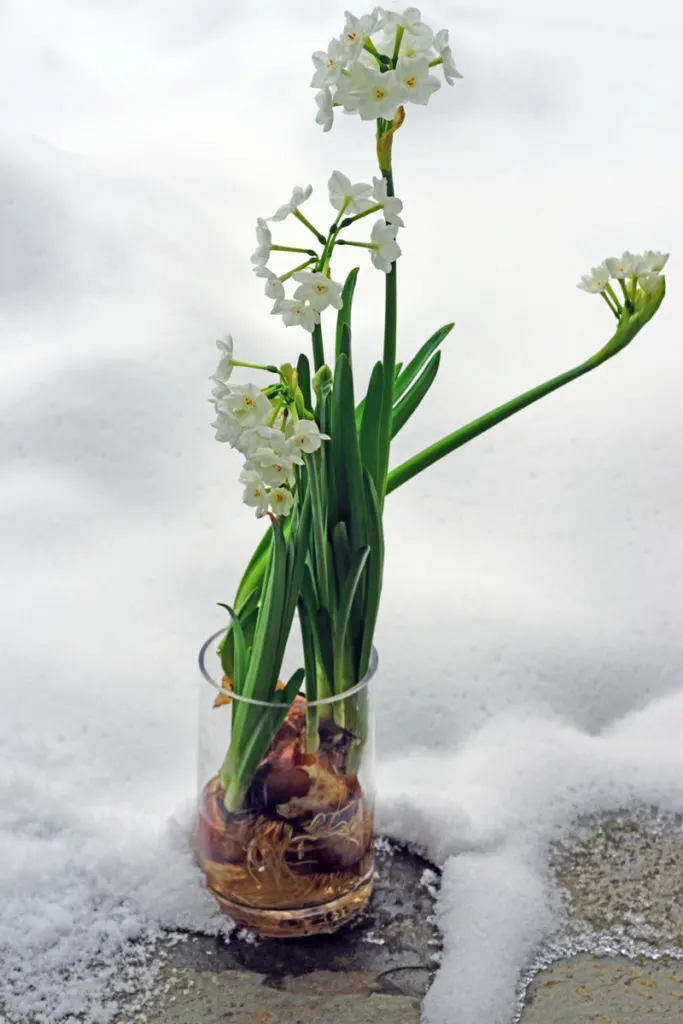
Like amaryllis, paperwhites are easy to force-bloom during the bleak winter months, making them another popular bulb that shows up in the stores around the holidays. Their clean white flowers and spring-like scent are a lovely reminder that warm weather will return.
Narcissus contain alkaloids that can induce vomiting, and the bulbs contain microscopic crystals which cause severe skin irritation and drooling. The compounds in paperwhites can lead to serious illness in cats and dogs, including vomiting, drooling, trouble breathing, diarrhea, and issues with the heart.
3. Holly
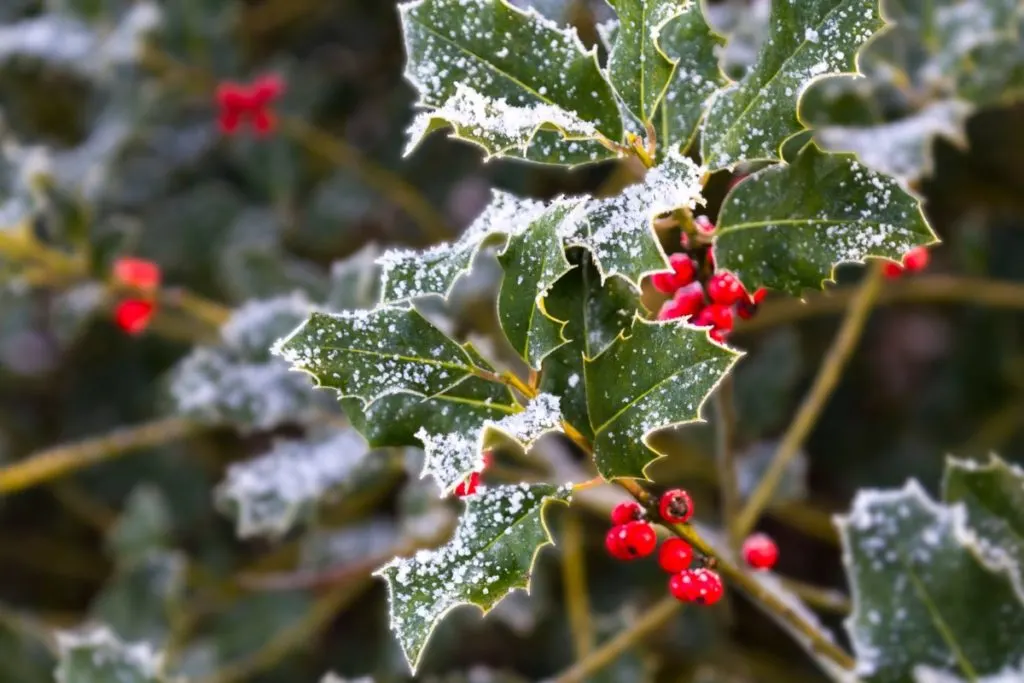
One would think that the spiky leaves of holly would be enough to deter pets from chewing on it, but there’s always that one stubborn cat or dog who insists on giving them a try.
Holly, both the leaves and berries, can cause painful stomach issues in cats and dogs because of the chemical compounds found in the plants and the spines on the leaves. However, the symptoms are mild most of the time, and a pet will rarely eat much of the plant.
4. English Ivy
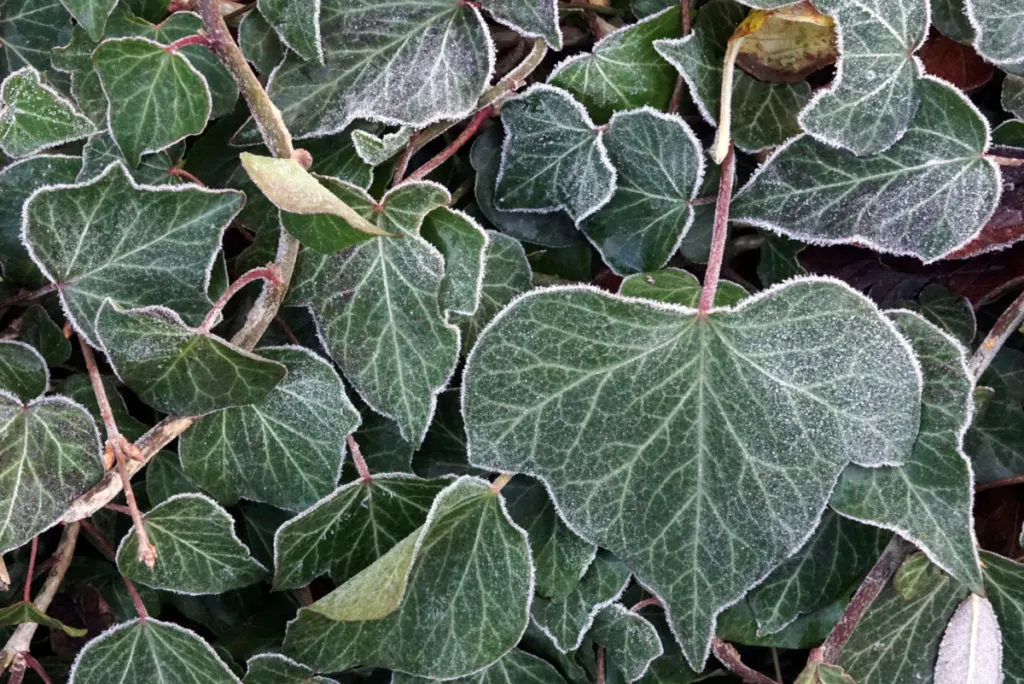
The dark green glossy leaves of ivy make for a beautiful decoration during the holidays. And you can’t have holly without ivy, at least not according to the old Christmas carol.
However, if you have pets, you’ll want to keep it up where they can’t get to it. English ivy is mildly toxic to both cats and dogs and can make for some seriously uncomfortable pets in your home. The most common side effects from ingesting ivy are diarrhea and vomiting, as well as excessive drooling. Your pet may even have a sore abdomen.
5. Mistletoe
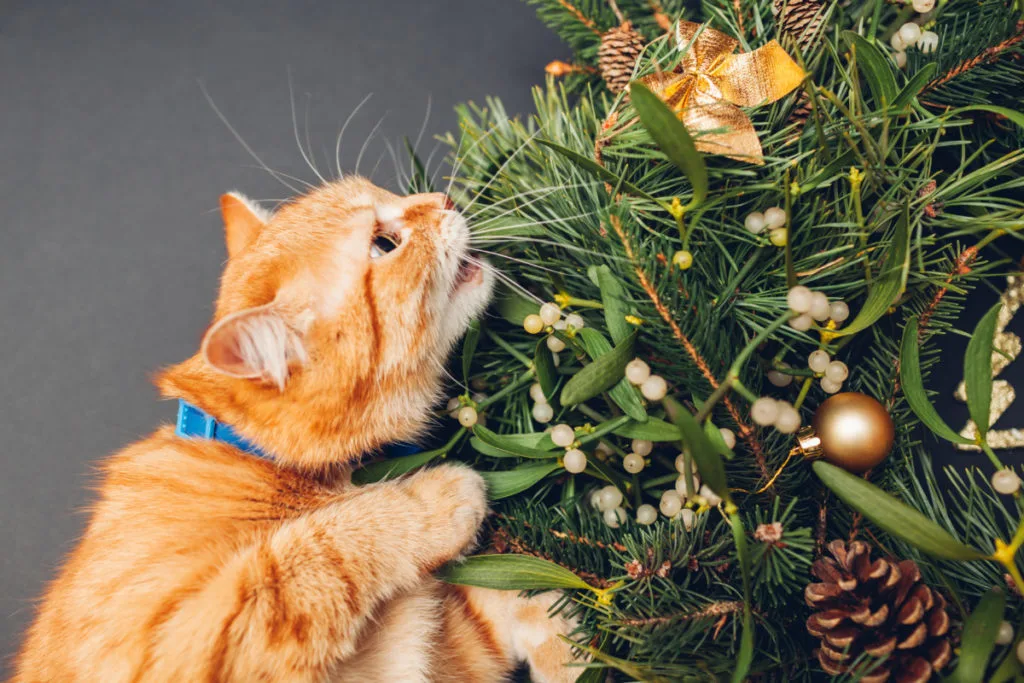
For many, decorating for Christmas isn’t complete until they hang the mistletoe. This wild parasite that lives off of its host tree makes a lovely decoration with it’ bright green leaves and cream-colored berries.
Unfortunately, I wouldn’t suggest kissing your dog or cat beneath it. Mistletoe is toxic to both cats and dogs, and even horses. Ingesting this poisonous plant can cause a host of issues ranging from mild to severe – diarrhea or vomiting, trouble breathing, slowed heart rate and rarely, low blood pressure.
However, despite this, you may choose to decorate with live mistletoe because it’s usually hung up high where most pets can’t reach it.
6. Christmas Rose or Hellebore
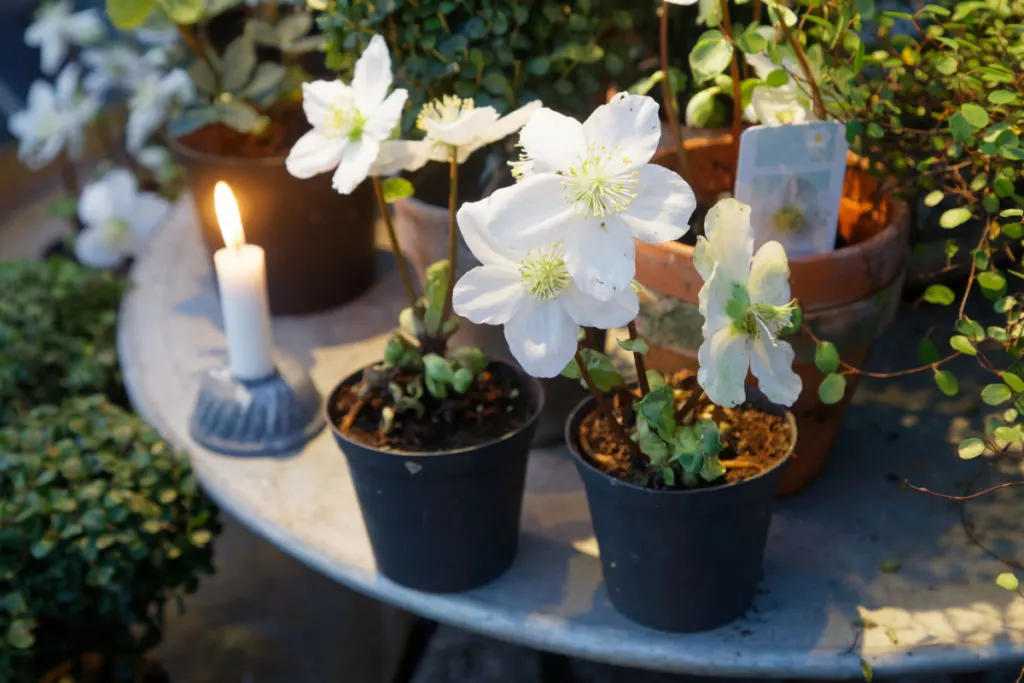
The hellebore is one of the most beautiful and delicate plants to grace our homes during the holiday season.
But it’s a plant that should be displayed with care by pet owners. All parts of the plant are extremely poisonous, but symptoms will depend on how much of the plant has been ingested. Like most poisonings, these include vomiting, diarrhea and drooling and lethargy.
Depending on how much of the plant was eaten, hellebore poisoning can cause serious complications for pets.
The good news is that pets rarely eat these plants, as they are terribly bitter, and one nibble is usually enough to dissuade your pet from eating more.
7. Winterberry
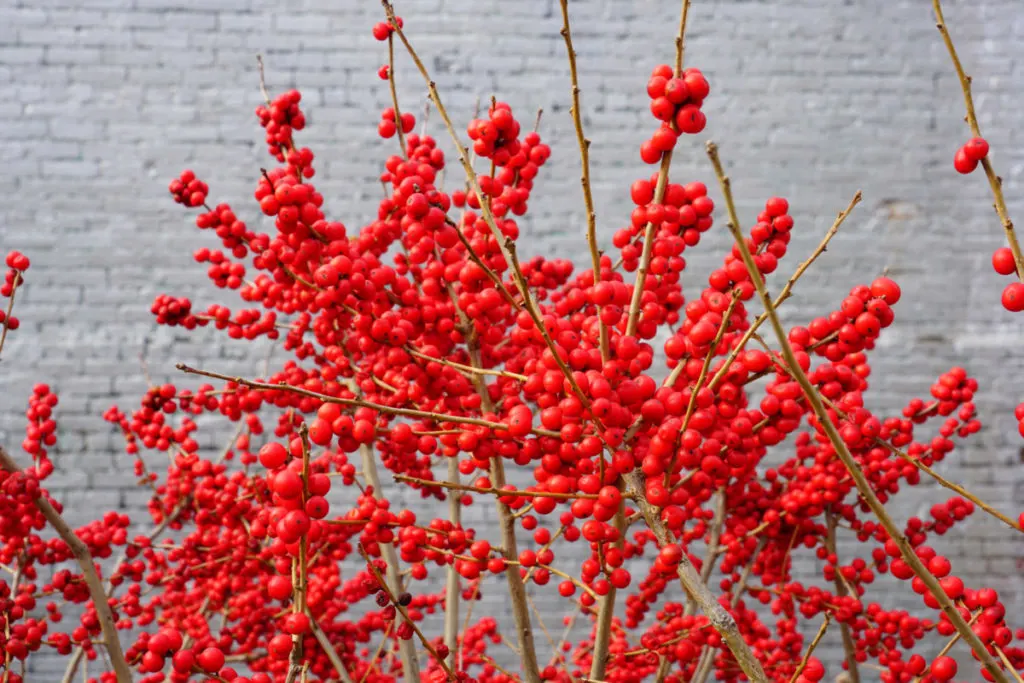
Winterberry is another species of holly, only without the spiky leaves. This beautiful shrub is best known for its bright orange-red berries that last throughout the winter. While it’s rare that anyone would grow this plant in their home, many folks will collect the branches covered with berries to decorate with.
They are a favorite in our home for wreaths and pine garland.
And just like holly, the leaves and berries of winterberry are also mildly toxic to cats and dogs, causing the same symptoms and issues.
8. Cyclamen
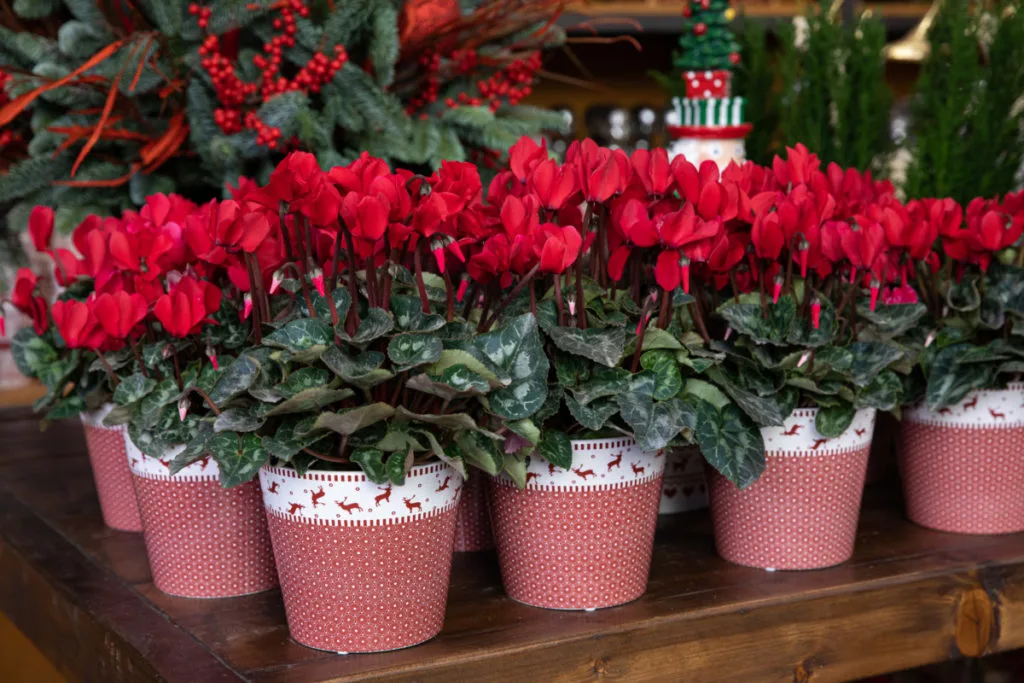
Another plant that’s popular this time of year for its pop of color is the cyclamen. These pretty plants, laden with red, pink or white blooms, show up in stores during the colder months of the year.
These plants don’t make a good addition to households with pets, as they can be quite toxic to both cats and dogs. The plants (like many other plants) contain terpenoid saponins which agitate a pet’s stomach and cause vomiting, diarrhea and drooling. If a pet eats large quantities of the plant, serious complications could occur, including death.
As pretty as they are, if you have a curious pet, you should probably skip these plants.
9. Kalanchoe
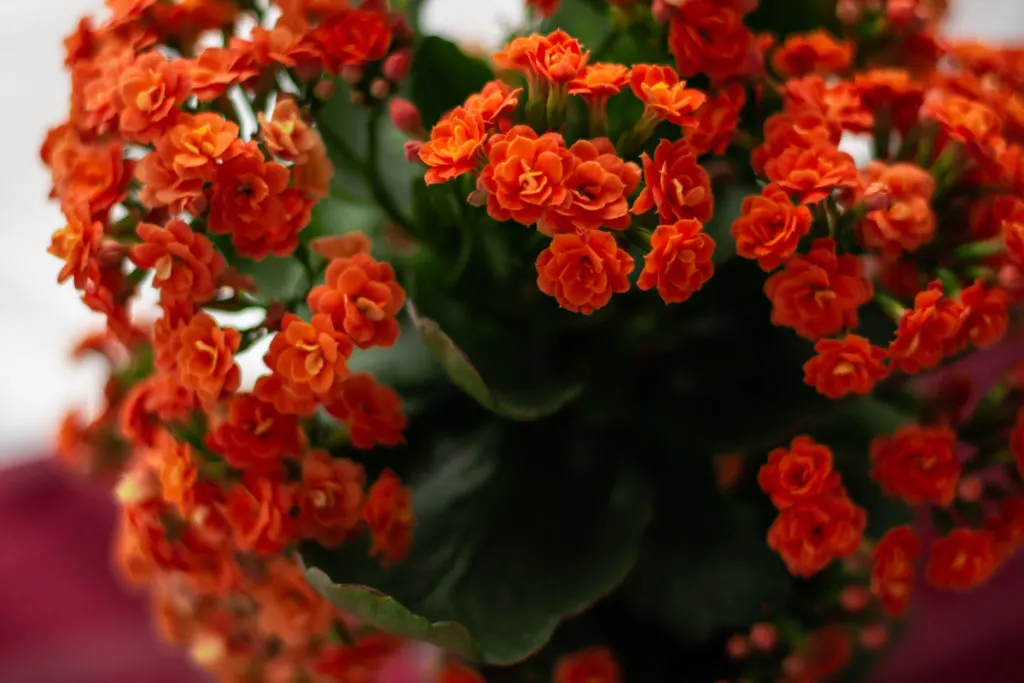
These brightly flowered succulents make lovely gifts to bring a bit of color to someone’s holiday. However, they are mildly toxic to both cats and dogs, causing vomiting or diarrhea in both animals. It’s been reported that in rare cases, abnormal heart rhythm can develop.
Symptoms are generally mild, but if you have a pet and a kalanchoe, you will want to put the plant where Fido or Frisky can’t reach it.
10. Norfolk Island Pine
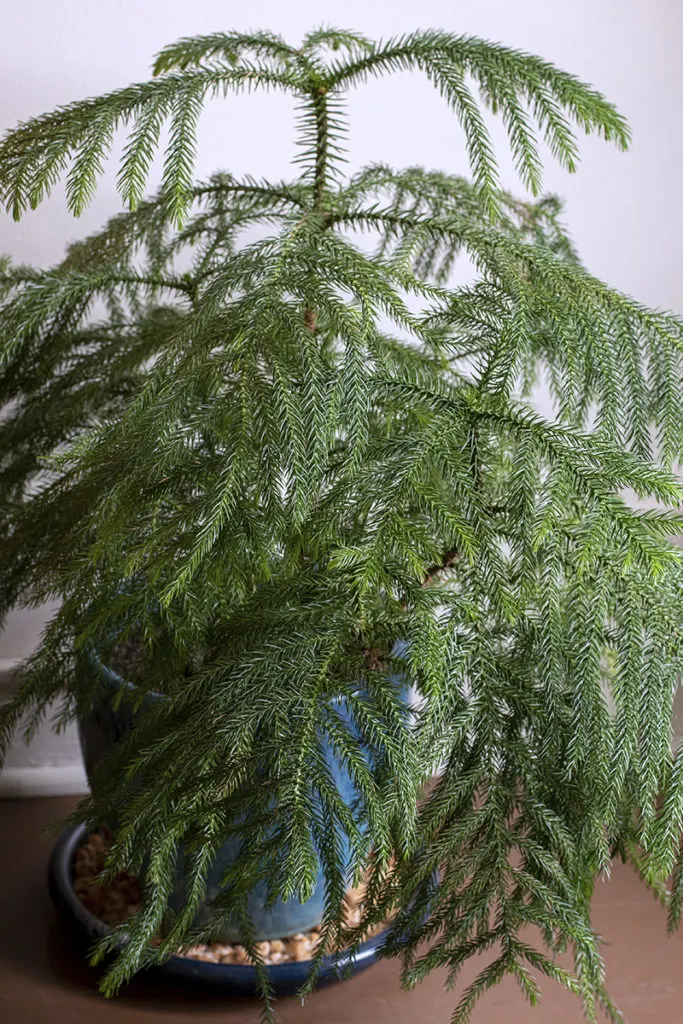
Norfolk Island Pines flood stores every holiday season as a compact live Christmas tree alternative.
Finding any reputable source as to the toxicity of this particular plant has proven challenging. You’ll find some sources that say it’s completely harmless and others that say it causes digestive issues and even depression in cats and dogs.
If you plan on bringing one of these plants into your home this season, perhaps a call to the vet beforehand would be a good idea.
11. Poinsettia
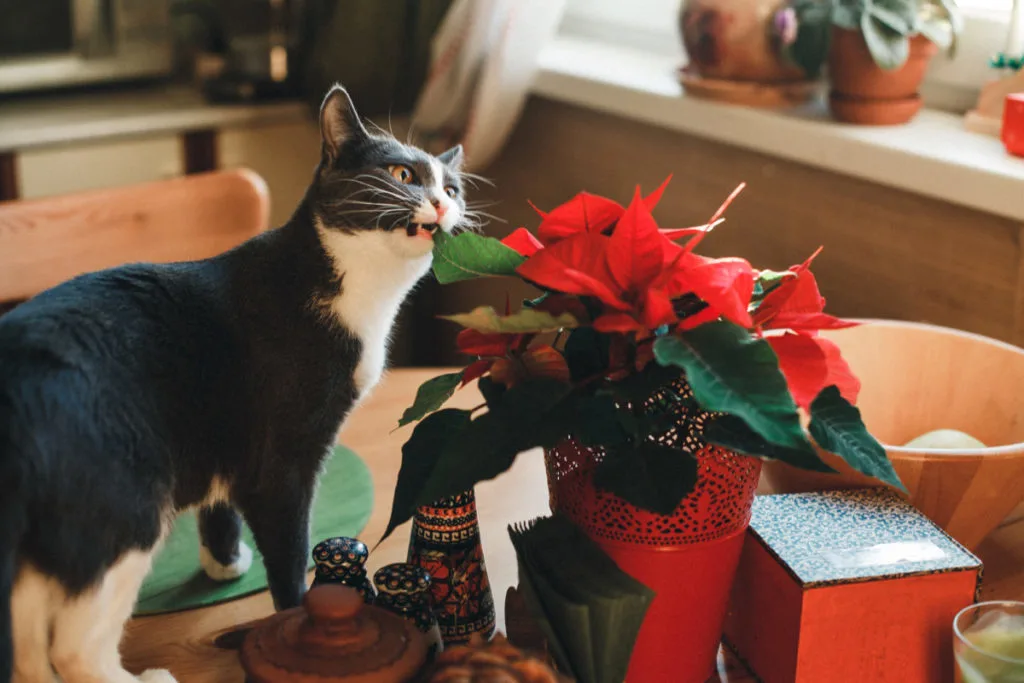
And finally, the poinsettia; this one may surprise you.
Poinsettias are by far the most popular Christmas plant, with more than 35 million sold in the US each year. That’s more than the number of live Christmas trees sold! It’s no wonder people want to know if these traditional plants are toxic to their pets.
Despite some of the warnings you may have heard through the years, poinsettias are only very mildly toxic to cats and dogs.
The plants contain a couple of naturally occurring compounds that can cause mild symptoms.
When eaten, the poinsettia can cause stomach upset, leading to some vomiting and diarrhea or drooling and foaming. If your pet gets some of the sap from the plant on their skin, mild irritation can occur.
Non-Toxic Holiday Plants
1. Rosemary
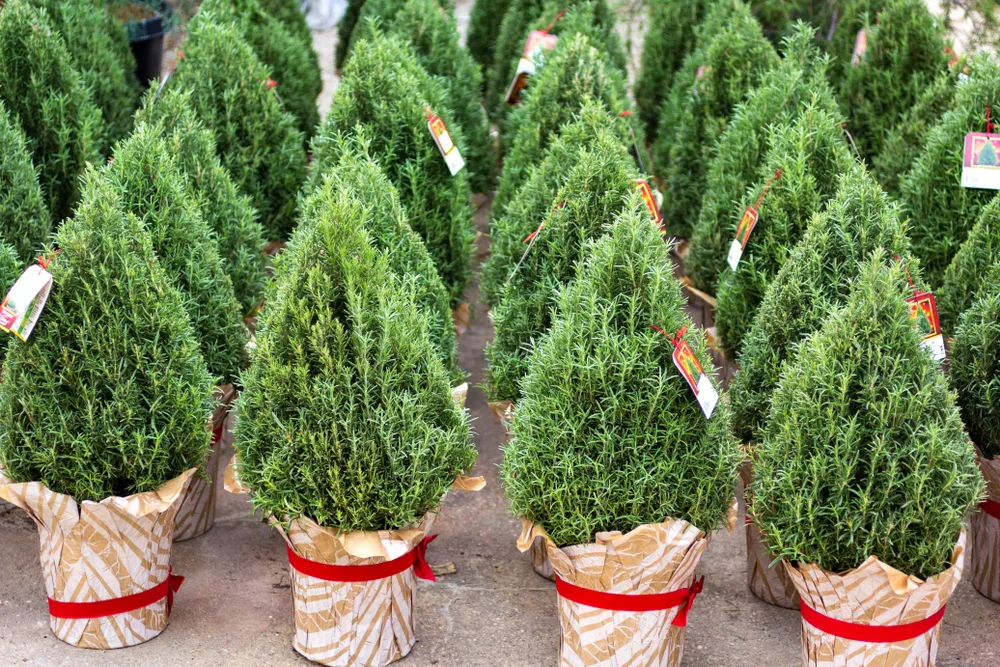
Beautifully shaped rosemary plants, trimmed to look like tiny Christmas trees, can be found in your local grocery store this time of year. Rosemary is the herb of remembrance, so it’s often given as a gift during the holidays.
Not only do these trees make a thoughtful gift, but they are an especially good gift for pet lovers as rosemary is non-toxic to both cats and dogs.
2. Christmas Trees – Spruce & Fir
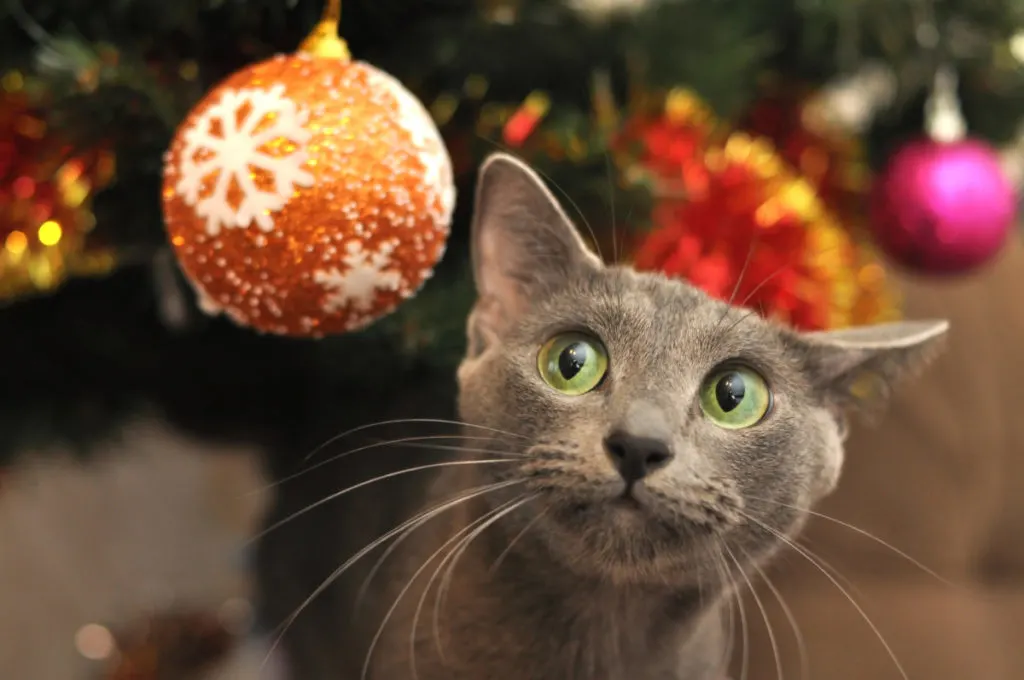
The most common Christmas tree species are spruce, pine and firs, none of which pose a potential toxic threat to your dog. However, the oil in pine trees can be toxic to cats causing liver damage or worse. If you have a feline friend and purchase a live Christmas tree, stick to the spruces and firs.
The real worry when it comes to Christmas trees and pets is the water in the plant stand. Especially, if you choose to use a commercial preservative in the water to keep the tree fresh.
Mold and bacteria can grow in stagnant tree water as well, which can make your pet sick. Avoid chemical additives and consider covering your tree stand with a tree skirt so pets can’t get to the water.
If you want to keep your live tree looking great throughout the holiday season, you will want to read:
11 Sure-Fire Ways to Make Your Christmas Tree Last Longer
And if you have a cat or dog that likes to nibble on the needles, consider putting up a gate to keep them away from the tree.
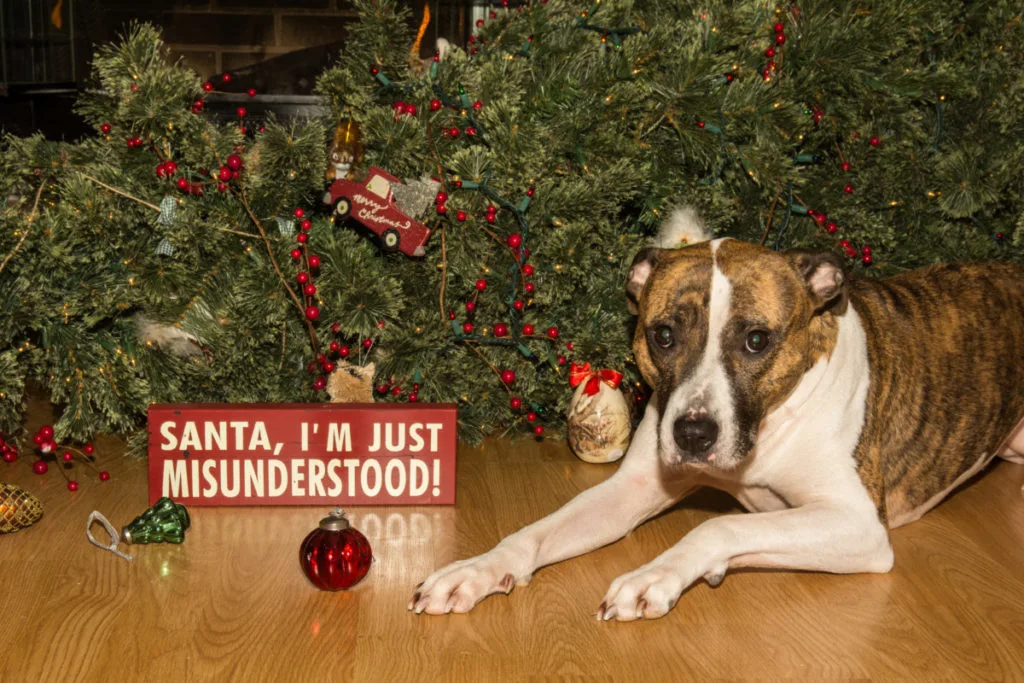
A note about the English yew
One very important distinction to make is with the English Yew. This common evergreen is a popular shrub used in landscaping nearly everywhere. While it’s never grown commercially to be used as Christmas trees, you may have it growing in your backyard and it might be tempting to use it to decorate with.
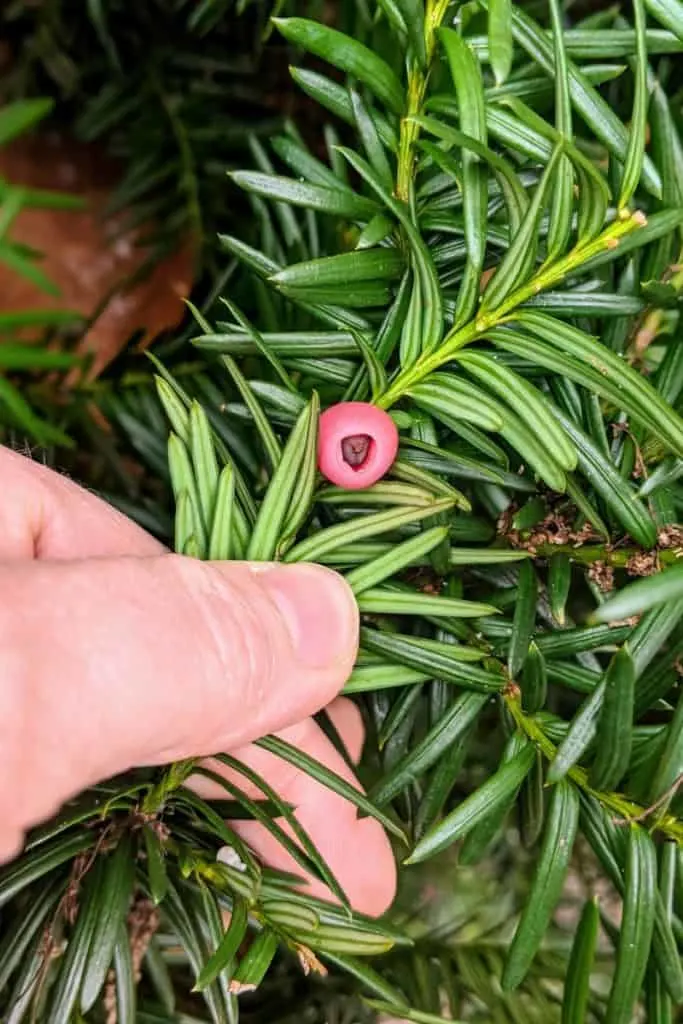
Every part of the common yew is deadly poisonous to cats, dogs and humans and should not be used for decorations. This is one evergreen that is best kept outside.
3. Christmas Cactus
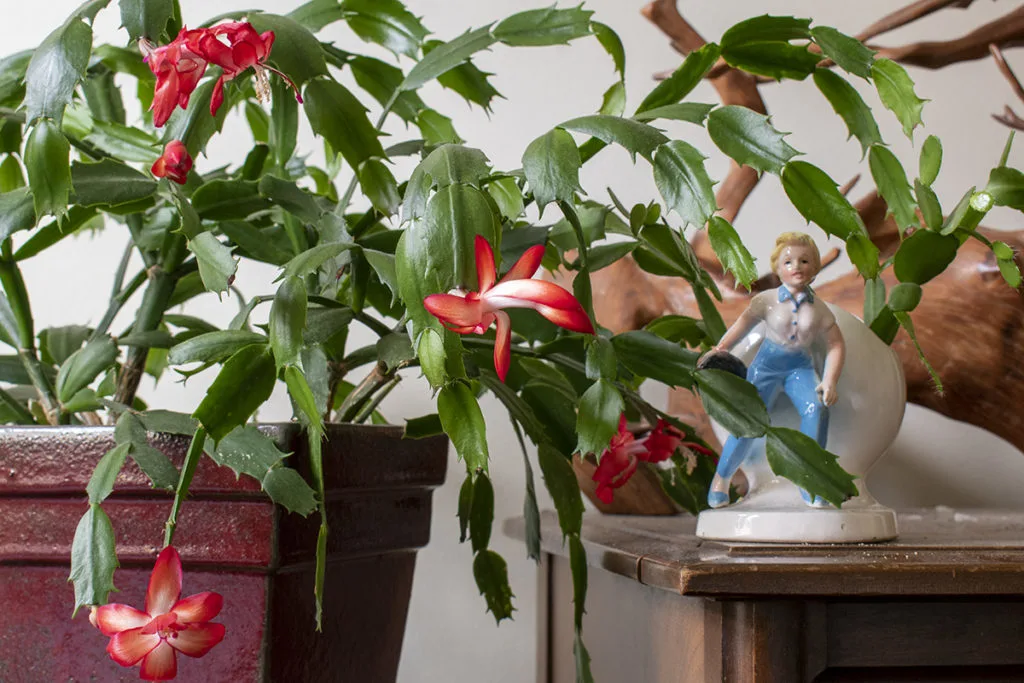
The Christmas cactus is a favorite of mine. With the proper care, these beautiful, long-lasting plants put out tons of showy blooms right around the holidays each year.
If you have pets, these plants should be a favorite of yours too. Holiday cacti – Christmas cactus, Thanksgiving cactus and Easter cactus are not poisonous to cats or dogs.
If you’ve got a plant-loving friend with pets, consider a Christmas cactus as a gift. They’ll be pleased to know you thoughtfully chose a plant that won’t bring harm to their companion.
Or, if you’ve got a Christmas cactus of your own, consider propagating cuttings for gifts.
How to Propagate Christmas Cactus + 2 Secrets To Big, Blooming Plants
As you’ve seen, while many of the plants listed here are considered toxic in some way, shape or form, most won’t cause lasting harm to a pet. But if you want to be 100% safe, you’ve got a few holiday plant options. When choosing holiday décor, be mindful of your pet’s behavior and tendencies and consider giving your vet a call to discuss any concerns.
We wish you and your faithful companions a happy and healthy holiday!
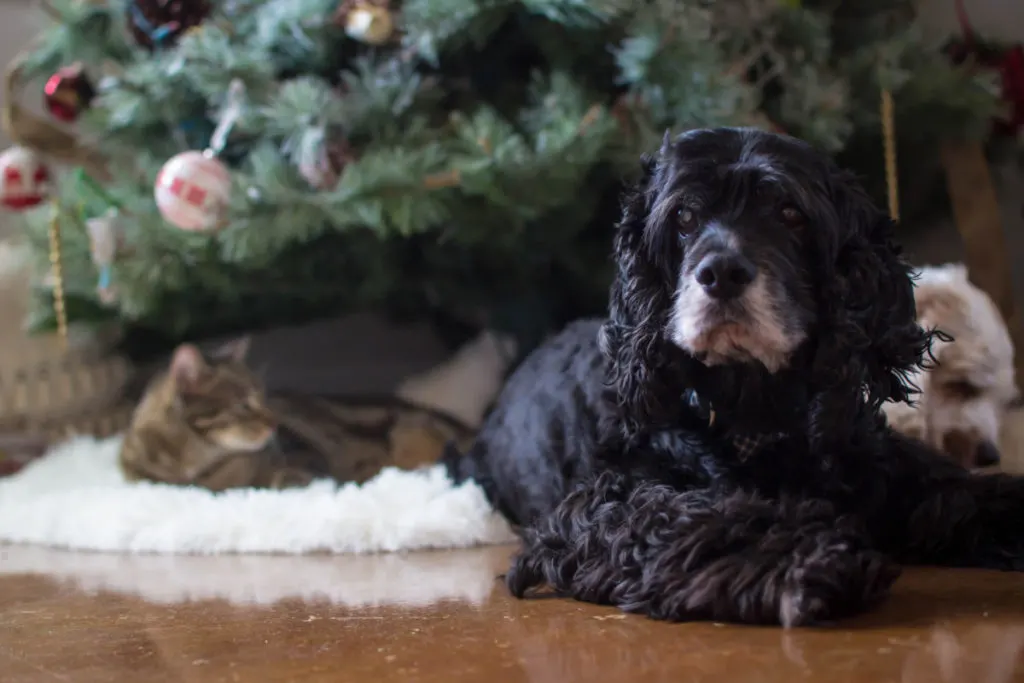
For more holiday-related plants, consider reading the following:
Christmas Cactus Care: More Blooms, Propagate & Identify Holiday Cacti
13 Common Christmas Cactus Problems & How to Fix Them
12 Christmas Plants For A Festive Indoor Garden
9 Plants to Forage For Natural Christmas Decorations

Get the famous Rural Sprout newsletter delivered to your inbox.
Including Sunday ramblings from our editor, Tracey, as well as “What’s Up Wednesday” our roundup of what’s in season and new article updates and alerts.

